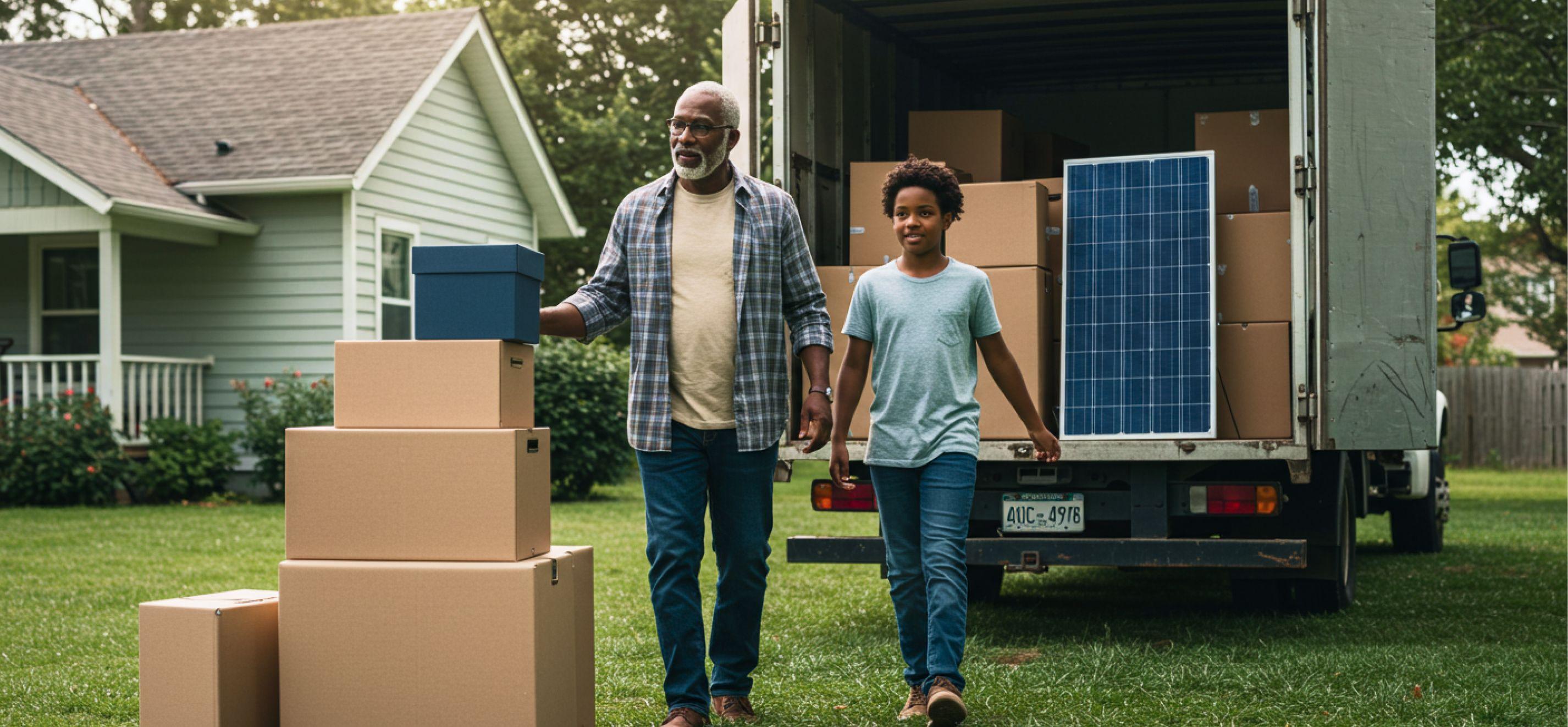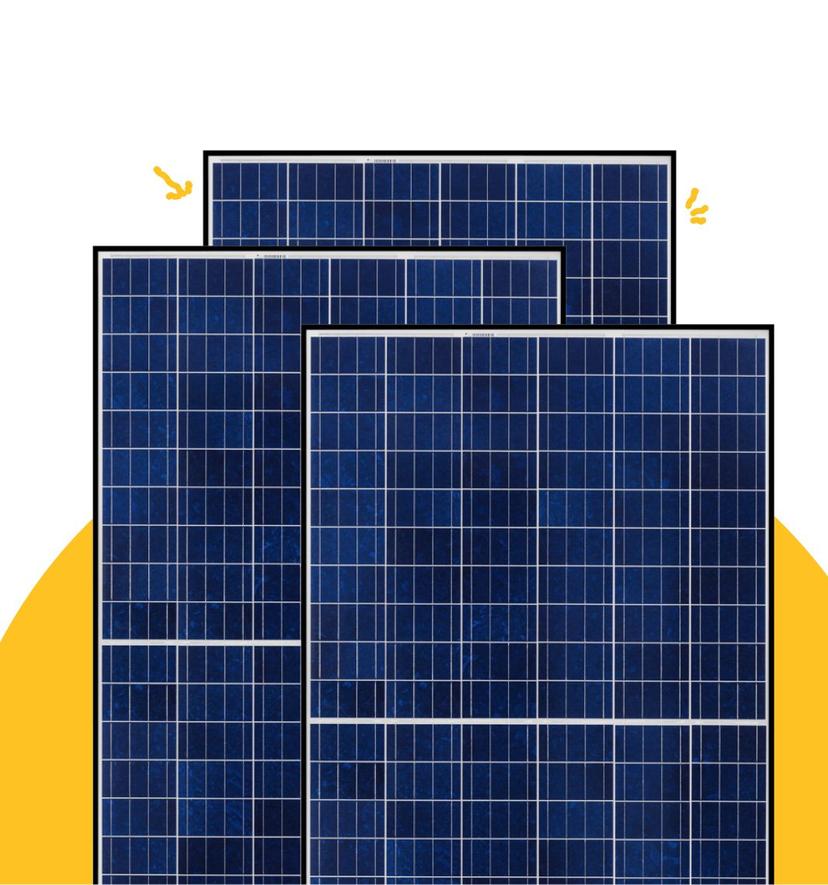Relocating With Your Solar Panels: Dos and Don'ts
Moving homes with a solar system can be tricky. This guide shares the key dos and don’ts to help you relocate your panels smoothly and avoid costly mistakes.
October 29, 2025 3 minutes

Relocating can be tasking, and when you have a solar system powering your home, it adds an extra layer of complexity. As people increasingly embrace the use of solar energy, the prospect of moving with a solar system becomes a relevant consideration. To move your solar panels to a new location would require entirely retrofitting the system onto a different property. Whether you're moving across town or to an entirely different state, ensuring a smooth transition for your solar panels is crucial. Here's a guide with dos and don'ts to help you navigate the process. If you adopt these processes stated here, then you and your solar system should be fine at the end of the day.
Dos
When relocating your solar system, understanding the essential steps to undertake is important. This comprehensive list aims to provide a thorough overview of the measures you should take, offering a broader understanding of the entire relocation process.
- Consult Your Solar Provider: Before the move, have a chat with your solar provider. They can offer guidance on dismantling, transporting, and reinstalling your solar panels to ensure everything is handled correctly. Who better to ask than the solar company that handled your business initially? Inform them that you’re moving, and they, in turn, will provide you with the necessary services you need to ensure a smooth transition.
- Update Your Location Details: If you're relocating to a different address, make sure to update your location details with your solar provider. This ensures accurate monitoring and maintenance services tailored to your new surroundings. If you have a remote monitoring device installed, you need to give your solar provider accurate information about your location. You do not want them to go to the wrong location, if at all, they need to help you with fixing your system.
- Check for Regulations: Your new location may have specific regulations applicable to solar installations. Ask and comply with their rules to avoid any complications and misunderstandings. If it is not your personal property, you have to ask your house owner if they allow solar installation on their property. You don’t want to move in and have to shelf your solar system because you’re not allowed to mount it. If it is your property, make sure you have compatible roofing sheets installed to allow for smooth installation.
- Secure Professional Assistance: When it comes to disconnecting and reconnecting your solar system, seek professional help. Solar installers have the expertise to handle the intricate components, minimizing the risk of damage during the relocation process. There is no DIY in solar installation or self-help. You have to involve the right people in order to make the whole process seamless.
- Assess Sunlight Exposure at the New Location: Before reinstalling your solar panels, be sure to ask the solar installers to assess the sunlight exposure at your new location. Ensure that there are no new obstructions that could affect the efficiency of your solar system. Trim down trees or remove any obstructions that might block adequate sunlight from penetrating the solar panels.
Don’ts
What to avoid during the relocation of your solar system can largely be inferred from the aforementioned list of dos. However, this dedicated compilation aims to provide emphasis and amplify the specific actions that should be refrained from during the process, providing clarifications on the crucial aspects of what not to do.
- Attempt DIY Solar Panel Removal: Removing or reinstalling solar panels is NOT a DIY project. Avoid attempting to do it yourself, as mishandling the components can result in damage and pose safety risks. You and your solar provider know how much has been invested in the purchase of the solar system. Considering this factor, you should therefore not gamble with the safety of your solar panels.
- Overlook System Compatibility: Ensure that your solar system is compatible with your new property. Factors like roof structure, space availability, and sunlight exposure should be considered to guarantee optimal performance. This cannot be overemphasised. You should also consider the buildings surrounding your solar system; are they taller and pose the risk of blocking the sunlight? Cross-check this fact to rule out any possibility of sun blockage to your panels.
- Forget to Update Monitoring Systems: If your solar system comes with remote monitoring systems, don't forget to update your new address. This ensures accurate tracking of your energy production and system performance. This is even more important and hard to miss because your solar provider should be involved every step of the way. Employing anyone other than the people recommended by your solar provider may cause a disruption in the whole setup of your solar system.
- Skip a System Checkup: After relocation, schedule a comprehensive checkup with your solar provider to ensure that all components are in working order. This proactive approach helps identify and address any issues promptly. You should also note any irregularities with your solar system so as to address them promptly before they escalate.
Conclusion
Moving with your solar system needs thoughtful planning and a touch of expertise. Talk to your solar provider, let them guide you through the steps; make sure your solar panels are transported safely to your new place; and please, leave the intricate disassembly and reassembly to the pros – it's like asking a chef to handle your favourite recipe. You can be rest assured they'll do a great job! Remember, this is as much about preserving your investment as it is about your constant access to clean energy. If you’re looking to start your journey, we’ve got you covered. Get started here.



Leave a Reply
Your email address will not be published.